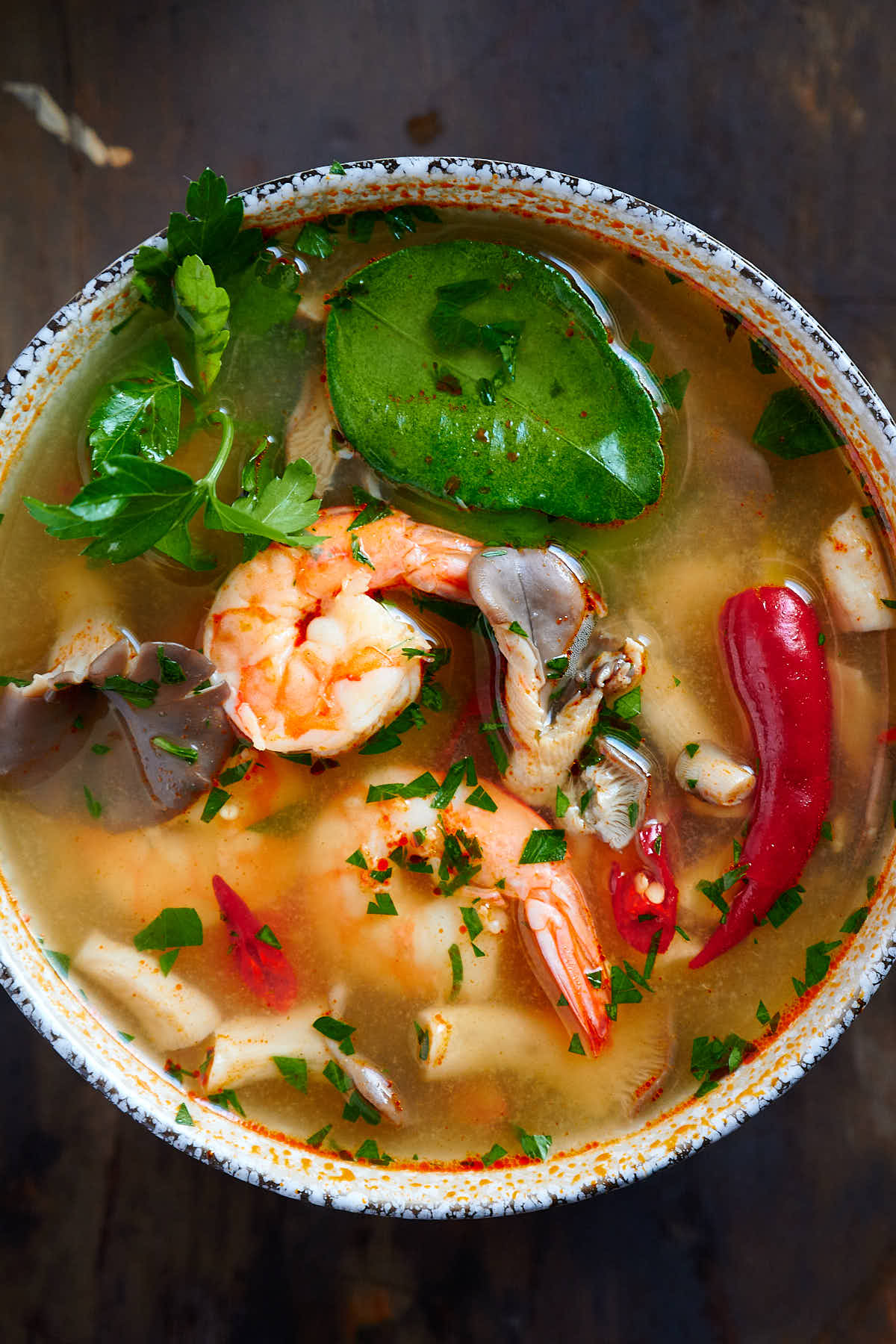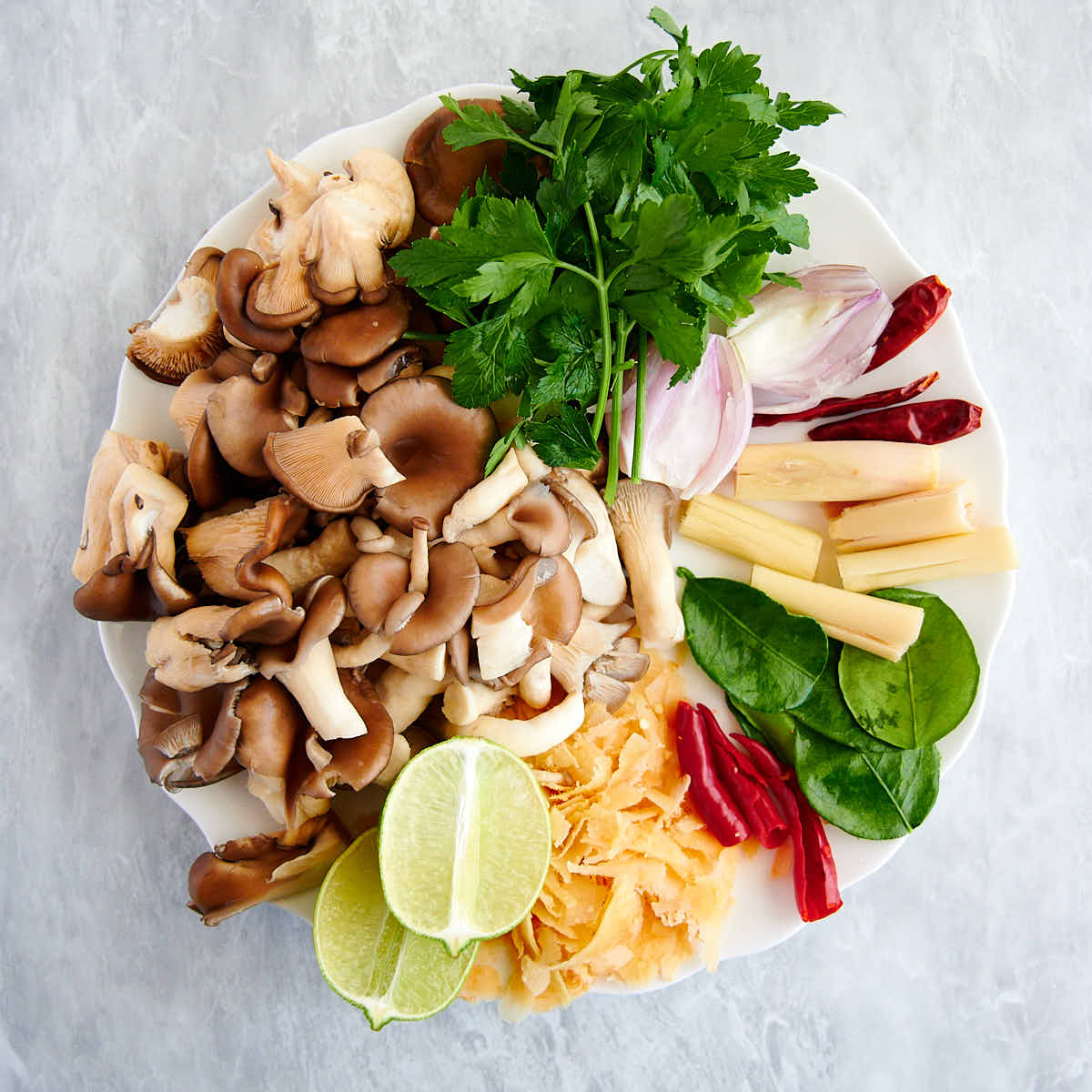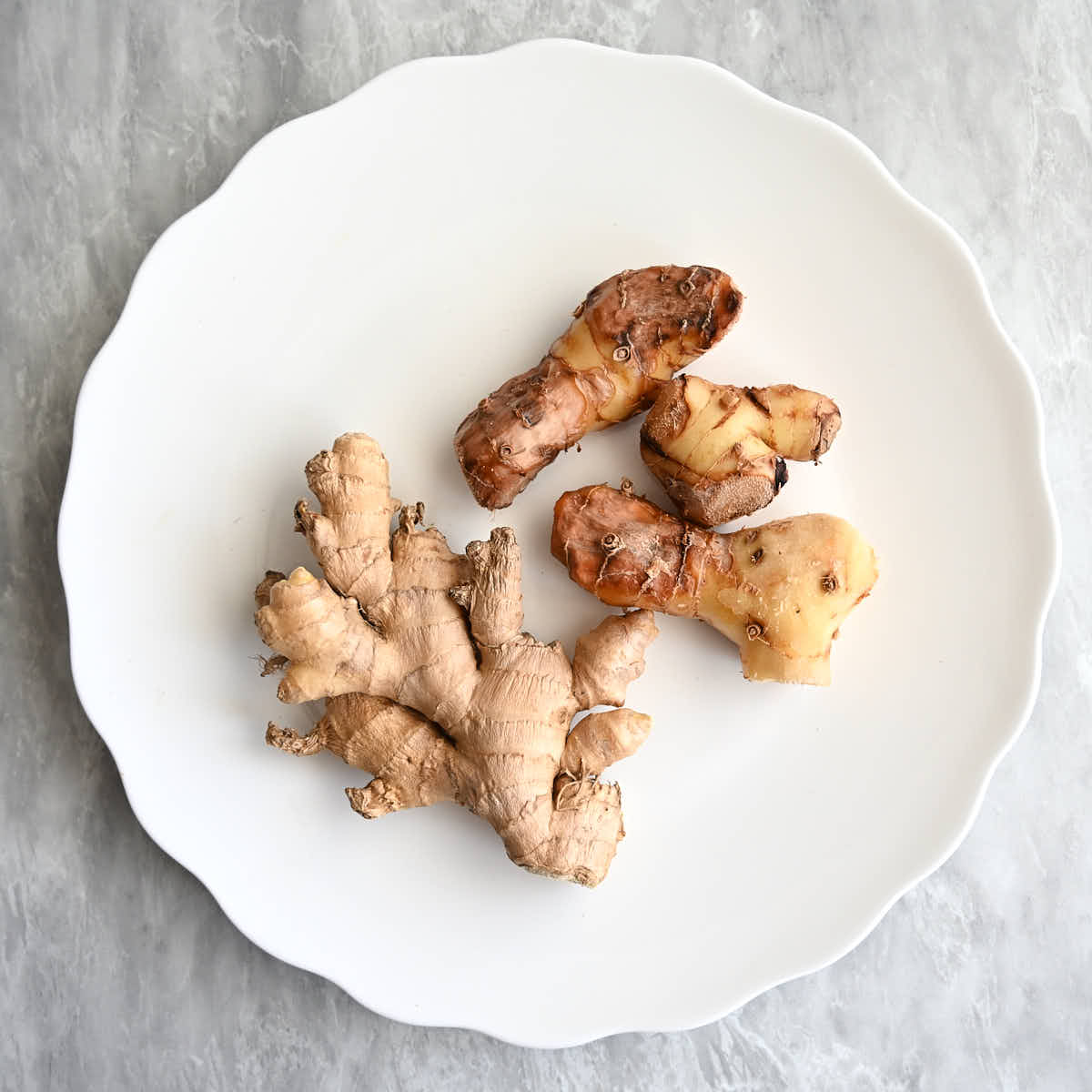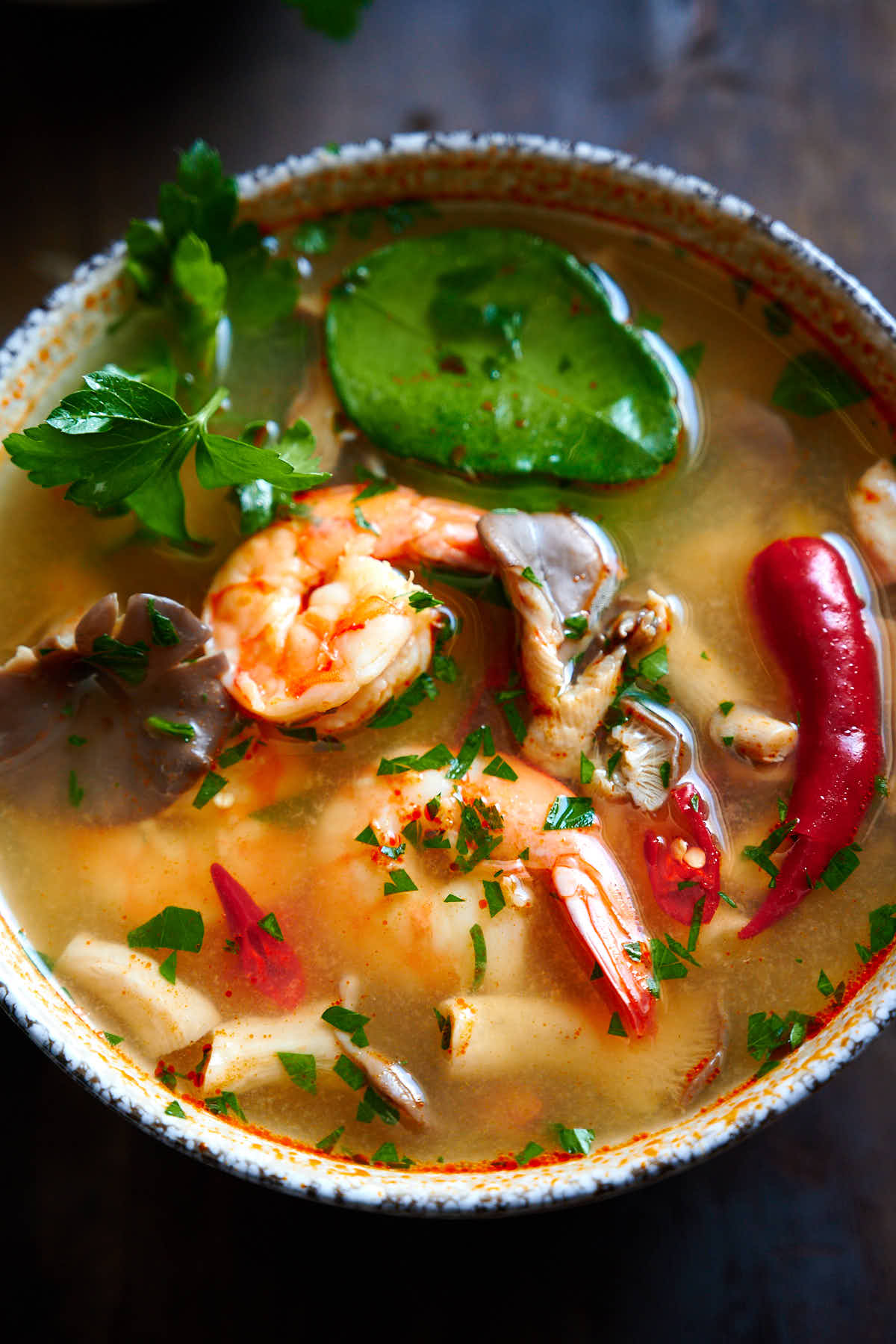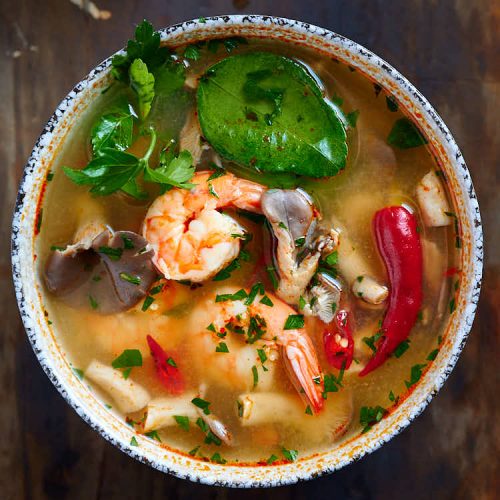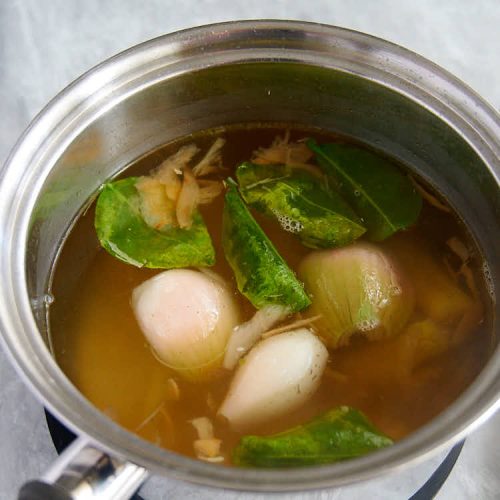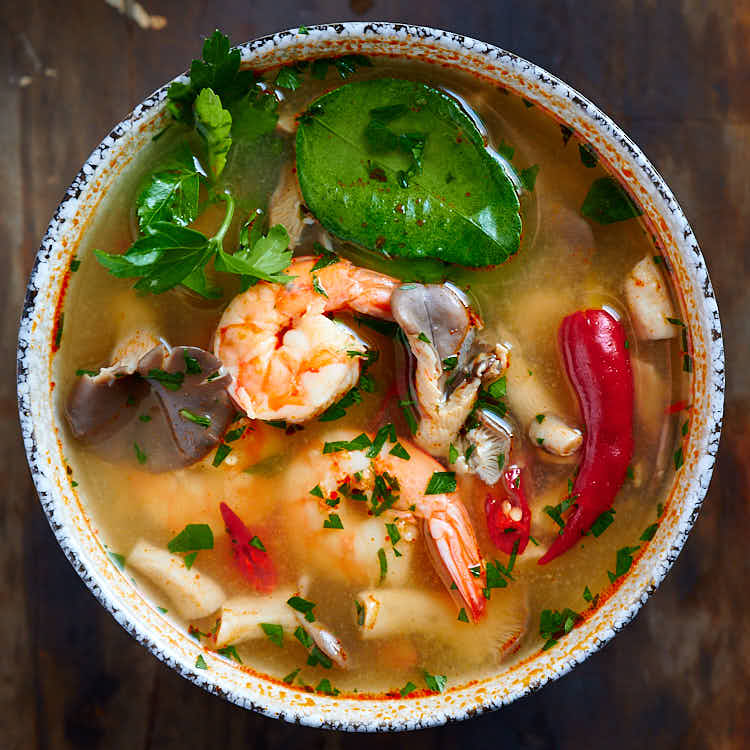Thai Tom Yum Soup, full of herbal flavors and vibrant colors, with sweet, spicy and sour notes. This soup is at the top of the list of my favorite Asian soups, along with pho bo soup. This soup is incredibly easy and quick to make too. It only appears to be difficult to make. However, once you have all the ingredients in place, it literally takes less than 10 minutes to cook. It’s the soup that both kids and adults enjoy and you can easily customize each soup bowl to be as hot or as mild as you want. Once you try this recipe, you will forget about going out to satisfy your tom yum cravings.
What is Tom Yum soup?
Tom yum soup, also known as Thai hot and sour soup, is a vibrant herbal soup that originated in Thailand. It uses a broth infused with the vibrant flavors of lime, galangal and lemon grass as the base. On top, the sweet and smoky chile jam is added to further enhance the taste. Finally, fresh, plump prawns and mushrooms complete the bowl. Sprinkle some fresh chopped cilantro on top and you will get bowl of soup that is as vibrant and colorful as it is tasty and delicious. Tom yum soup made with prawns, known as tom yum goong or tom yum kung, is the most popular version of the soup among tourists in Thailand. It’s also the most popular version of the soup outside of Thailand. However, there exist dozens of variations of this soup. Tom yum soup can be made with chicken, pork, squid, clams, or use coconut milk as the base. There is also a vegetarian version of tum yum soup. Some variants add noodles to this soup or serve it with rice. You can learn more about different variations of tum yum soup here.
How to make Tom Yum Soup?
As I mentioned above, making tom yum soup is a very simple task once you have all of the ingredients in place.
It involves the following simple steps: That’s all there is to it. Once you have the ingredients prepared, it literally takes 7 minutes of cooking time, plus the time to bring the broth to a boil.
Ingredients for tom yum soup
Traditional tom yum soup uses lime leaves, galangal and lemongrass for getting its unique, vibrant flavor. Some recipes, like this one, add shallots for their sweet and savory flavor. Lime leaves, lemongrass and galangal are easy to find at most Asian grocery markets. If you live in a large city, you will not have a problem finding them. If you don’t have Asian shops around, galangal and lime leaves can be hard to find. There are no close substitutes for them. Some recipes call for ginger as a substitute for galangal. You can try that but be aware that galangal has a sharp citrusy taste, while ginger has a pungently spicy and sweet taste. The soup will still taste great but the flavor profile will be different.
If you can’t find lime leaves, just omit them. Thai chiles should not be a problem to find, they are available at most larger supermarkets. But if you can’t find them, fresh serrano chilies, halved lengthwise, can replace the crushed kii noo chilies.
Tips
Thai cooks do not usually remove the tough-textured herbs from this soup, as it is understood that they are not to be eaten. Nevertheless, I recommend removing them as that makes the soup much easier to eat. As well, remove prawn tails. While the tails look good presentation-wise, they can get in the way of enjoying your soup. Fish sauce can have a pretty strong smell but it’s a very important ingredient that also defines the taste of the soup. Don’t be afraid to use it. The smell will be barely noticeable in the soup, if at all. Use fresh fish sauce and always refrigerate it after opening. If you want to tone down the heat, omit the crushed chilies or serve them on the side. If you can’t find kaffir leaves, there is no substitute for them, simply omit them from the recipe, or buy dried kaffir leaves that are readily available online. Galangal also does not have good substitutes and tastes very different from ginger, despite the similarities in appearance. Some recipes advise using ginger. While the soup will taste great with it, it won’t have the same unique flavor. Some places sell fresh galangal online. Dried galangal is a great option and it has a much longer shelf life than fresh one.
With what to serve tom yum soup?
This soup does not require any additions and is plenty delicious on its own. That said, try serving this soup with a bowl of white jasmine rice on the side. You can also add cooked ramen noodles to the bowls, or any other noodles of your choice.
Some quick tom yum soup variations to try
We love tom yum soup with noodles. Ramen noodles are great with this soup. You can also use any other favorite Asian type noodles. Just cook them separately and add to the bottom of the serving bowl before adding the soup. Some tom yum recipes include tomatoes. Cut them in quarters and add in at the same time as mushrooms. Many recipes like adding thinly sliced green onions together with cilantro. They add a lot of flavor. If you prefer chicken, you can easily substitute prawns with sliced cooked chicken. The recipe and the cooking instructions will remain the same. The name of this new version of the soup will be tom yum kai.
